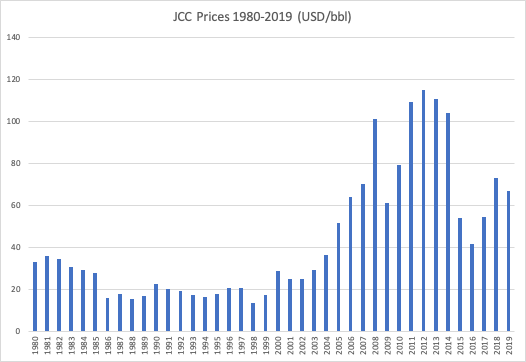US-Iran Tensions: Market Implications Following Recent Strikes

In a significant escalation of tensions, the United States conducted airstrikes on three Iranian nuclear facilities over the weekend, an action President Donald Trump claims has "completely and totally obliterated" Iran's nuclear capabilities. This military intervention has raised critical concerns regarding its implications for global markets, particularly oil prices, which have already begun to reflect the uncertainty surrounding the situation.
As of June 23, 2025, the geopolitical landscape in the Middle East has shifted dramatically. Iran's regime, facing increased isolation following the loss of its ally, the Assad government in Syria, and the weakening of its proxies such as Hamas and Hezbollah, finds itself in a precarious position. The economic repercussions of the US strikes may reverberate through the global economy, with a focus on the oil market and broader financial instruments.
The Strait of Hormuz, a vital shipping lane through which approximately 20% of the world's oil passes daily, could become a focal point of conflict. Analysts speculate that Iran may retaliate by attempting to close this strategic waterway, a move that could lead to skyrocketing oil prices and significant disruptions in global supply chains. According to the U.S. Energy Information Administration (EIA), any prolonged disruption could result in a significant spike in crude oil prices, as seen in previous conflicts in the region.
As market analysts monitor these developments, initial reactions have already been observed. West Texas Intermediate (WTI) crude oil futures surged from $74 to $77 per barrel shortly after the strikes, while Brent crude exceeded $80 before adjusting slightly downward. This volatility is indicative of market sentiment responding to the potential for future conflict and its implications for supply and demand dynamics.
Experts emphasize that the future of the Iranian regime and its responses will play a crucial role in shaping market trajectories. Dr. Lisa Thompson, a political analyst at the Middle East Institute, noted, "The Iranian regime is considerably weaker now, and any aggressive retaliation could further isolate them. The question remains whether they will choose to escalate or seek diplomatic avenues."
Historical precedents suggest that markets can be resilient in the face of military interventions. For instance, when the U.S. invaded Iraq in 2003, stocks initially surged as investors anticipated a swift resolution. However, the long-term implications of sustained conflict could lead to higher borrowing costs and inflationary pressures, complicating monetary policy decisions for the Federal Reserve.
Furthermore, the potential for increased government spending to support military operations could exacerbate budget deficits. According to the Congressional Budget Office (CBO) report published in March 2025, the U.S. federal deficit is already on an unsustainable trajectory, raising concerns about future fiscal policy and its impact on interest rates.
The international community is closely monitoring these developments. Organizations such as the United Nations and the International Monetary Fund (IMF) have expressed concerns regarding the potential for conflict escalation and its economic ramifications. The IMF’s World Economic Outlook, published in April 2025, highlighted that geopolitical tensions could significantly hamper global economic recovery efforts.
In conclusion, the unfolding situation between the U.S. and Iran poses significant risks to global markets, particularly in the oil sector. The coming weeks will be critical in determining whether diplomatic channels will prevail over military escalations, with profound implications for economic stability both regionally and globally. Analysts urge caution as investors weigh potential scenarios, from diplomatic resolution to possible conflict, all of which will shape market dynamics in the months to come.
Advertisement
Tags
Advertisement





